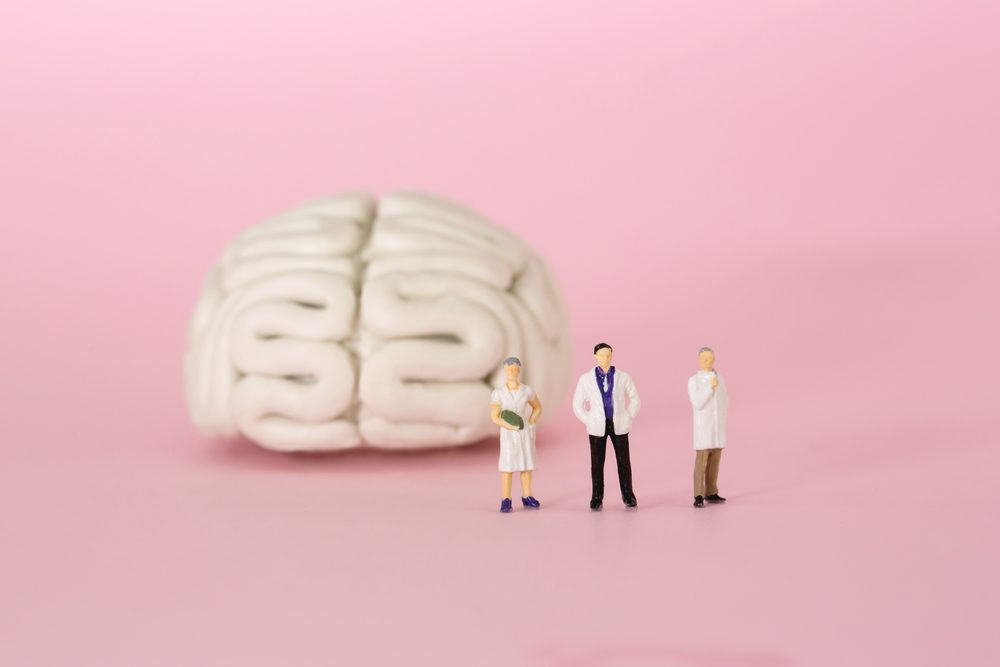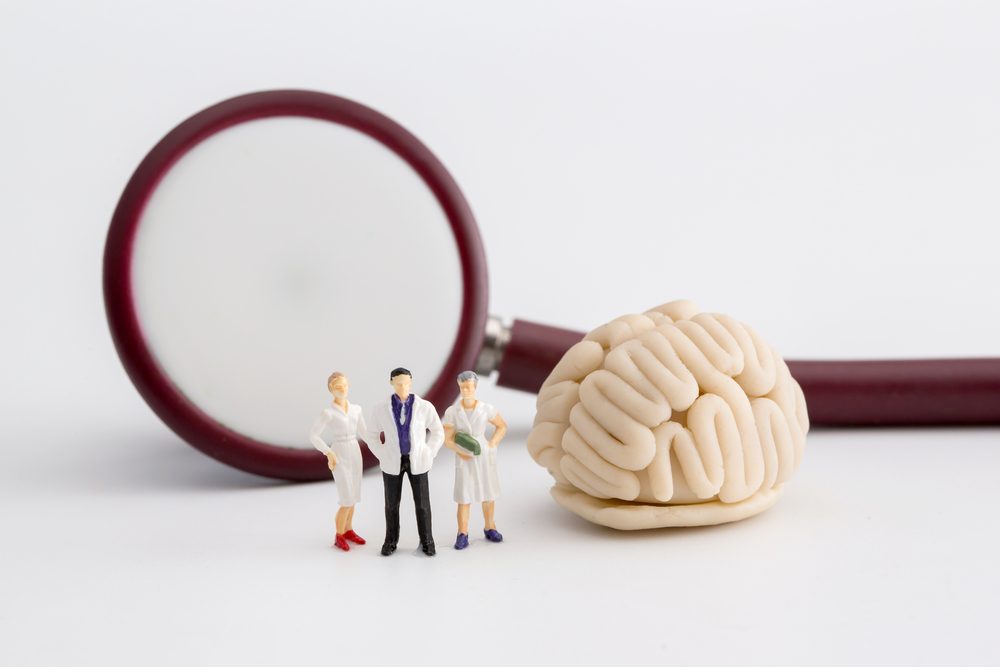 They’re both dangerous—and sometimes deadly. They can happen at any age. And they both can cause permanent damage to the brain. So it’s no wonder people get confused about the differences between a stroke vs. aneurysm. “Strokes and cerebral aneurysms are terms you hear often and many people aren’t entirely clear what they mean,” says neurologist Jessica Carpenter, MD. “Both are conditions that involve blood vessels in the head.”
They’re both dangerous—and sometimes deadly. They can happen at any age. And they both can cause permanent damage to the brain. So it’s no wonder people get confused about the differences between a stroke vs. aneurysm. “Strokes and cerebral aneurysms are terms you hear often and many people aren’t entirely clear what they mean,” says neurologist Jessica Carpenter, MD. “Both are conditions that involve blood vessels in the head.”
What is a stroke?
Strokes occur when blood supply is cut off to parts of your brain, which can cause the brain tissue to die, due to oxygen and nutrient loss. Strokes are a significant health issue—they’re the fifth most common cause of death in the United States and a leading cause of long-term disability, according to the CDC.
There are two types of strokes, according to Dr. Carpenter. “The first is an ‘ischemic stroke,’ which occurs when a blood vessel gets blocked and the brain tissue behind the blood vessel is permanently damaged from lack of blood flow or oxygen. The second is a ‘hemorrhagic stroke,’ which occurs when there is bleeding in the brain.” Ischemic strokes are considerably more common—87 percent of all strokes are ischemic, according to the CDC.
What are the signs of a stroke?
There’s a good reason to know the signs of stroke—getting treatment within three hours of a stroke’s onset with the drug Alteplase IV r-tPA could increase your chances of recovery, according to the American Stroke Association. So what are the key symptoms of a stroke? You should watch out for the following:
• Numbness or paralysis of your arm, leg, or face. The symptom often appears on just one side of your body, so a good indicator that you’re experiencing a stroke would be an asymmetrical smile that droops on one side or an arm that droops when you try to raise it over your head.
• Vision problems. If you’re having a stroke, your eyesight may become blurry or blackened or you might see double.
• Speech issues. You may have trouble speaking—or even understanding what other people are saying to you.
• Headache. A sudden, severe headache, that may cause nausea and vomiting, could be a stroke symptom.
• Loss of coordination. You may develop trouble walking, lose your balance, or feel dizzy.
If you experience these symptoms, call 911. To make it easy to remember, the American Stroke Association developed the F.A.S.T. stroke action plan, which stands for Face, Arms, Speech, and Time. And watch for the signs of stroke people ignore.
 What is an aneurysm?
What is an aneurysm?
“A cerebral aneurysm is an abnormal outpouching [bulge] of a blood vessel wall,” Dr. Carpenter says. “Bleeding from an aneurysm rupture is a type of hemorrhagic stroke.” That helps explain a lot of the confusion between stroke vs. aneurysm—because when an aneurysm breaks, it is considered a type of stroke.
What are the signs of an aneurysm?
“Aneurysms often have no symptoms unless there is a break in the vessel wall which causes a hemorrhage,” Dr. Carpenter says. In some cases, the aneurysm may grow large enough to impact nerves and cause pain near the eye, double vision, or a dilated pupil.
But if the aneurysm breaks, these severe symptoms develop quickly. “Patients often experience a very sudden onset of a severe headache that’s often described as ‘the worst headache of your life,'” Dr. Carpenter says. “They don’t build up over hours like a migraine—they start abruptly. Neck pain, seizures, or altered consciousness may also occur.”
Again, if you develop these symptoms, call 911. “An aneurysm rupture is a medical emergency and patients should call 911 so they can receive rapid medical assistance,” Dr. Carpenter advises.
 What are the risk factors for stroke vs. aneurysm?
What are the risk factors for stroke vs. aneurysm?
There are risk factors for strokes you can control—and several that you can’t. Losing weight, quitting smoking, reducing stress, and cutting back on drinking alcohol and diet sodas can help reduce your risk of developing a stroke. Several other health conditions—including diabetes, heart disease, high cholesterol, and high blood pressure—can increase your risk, as can genetic factors like your gender (women are more likely to have a stroke), race (African Americans, Asian Americans, and Hispanic Americans are at increased risk), or if a member of your family had a stroke, particularly at a young age. As you get older, your risk increases. You can learn more about stroke risk factors here.
As for aneurysms, many of the same risk factors are at play—age, high blood pressure, smoking, and a family history can all increase your risk, according to the National Institute of Neurological Disorders and Stroke. But aneurysms are also associated with malformations of the arteries and veins (called AVMs), and head traumas or brain tumors.
“Genetics are a major factor in the development of aneurysms,” says Robert Segal, MD, co-founder of LabFinder.com. “Family members of patients with intracranial aneurysms are at increased risk of having an aneurysm, even in the absence of a known hereditary syndrome.” These include connective tissue and kidney diseases, and some rare inherited conditions, he says.
“If you have a family history of aneurysms you should be screened,” Dr. Segal suggests. “Unruptured intracranial aneurysms should be monitored annually for two to three years, and every two to five years thereafter if the aneurysm is stable.”
How can I decrease my risk of a stroke or aneurysm?
There are a few ways to help reduce the risk of developing either condition. “The two most important lifestyle changes are quitting smoking and controlling high blood pressure,” Dr. Segal says. “Other important health changes are controlling cholesterol and getting regular physical exercise. Hypercholesterolemia and regular physical exercise appear to decrease the risk of aneurysm formation.”
For aneurysm, a few other lifestyle changes can help. “Patients should avoid smoking, heavy alcohol consumption, stimulant medications, illicit drugs, and excessive straining,” Dr. Segal says.
The post These Are the Differences Between a Stroke and an Aneurysm appeared first on Reader's Digest.
from Reader's Digest http://bit.ly/2UbRP8D
These Are the Differences Between a Stroke and an Aneurysm Reader's Digest
Нема коментара:
Постави коментар